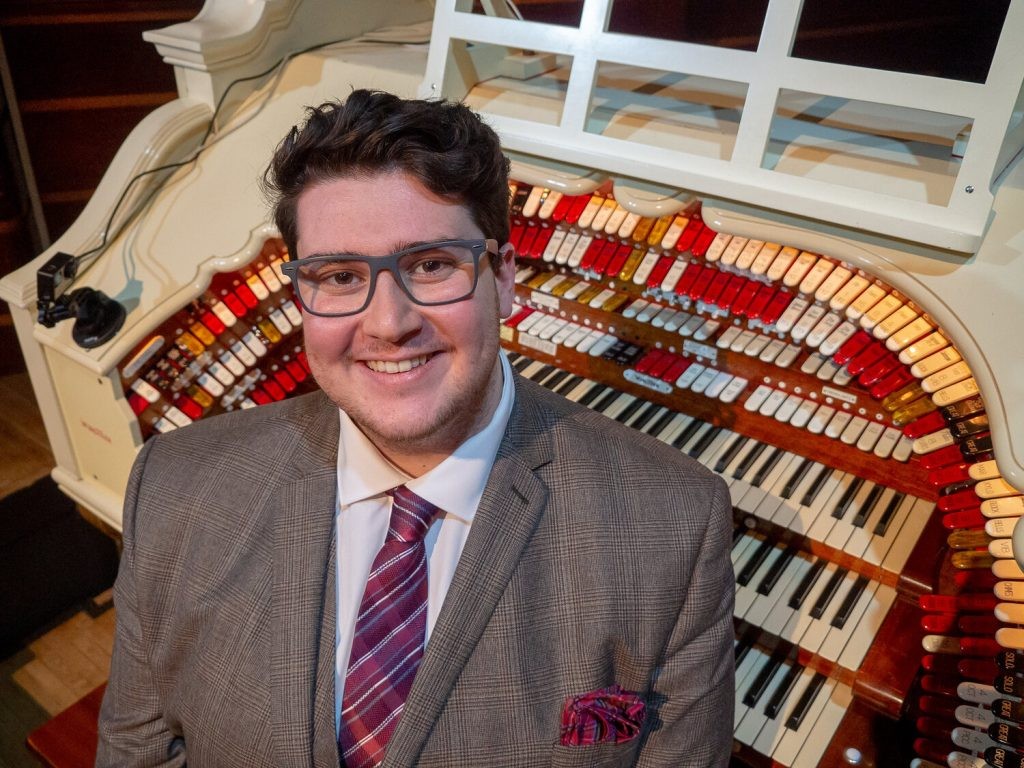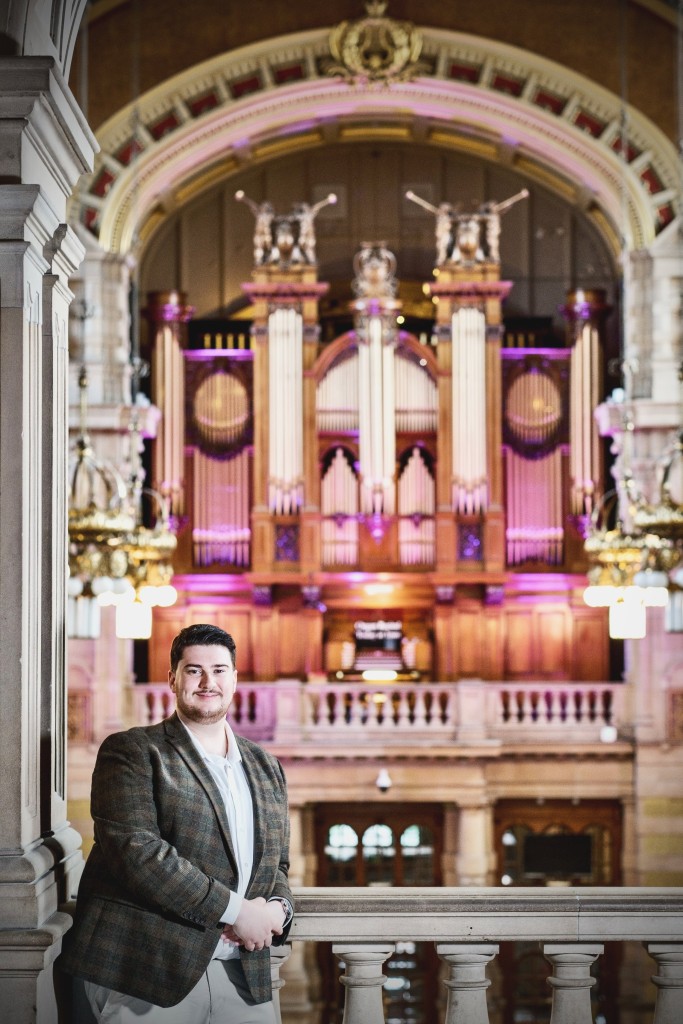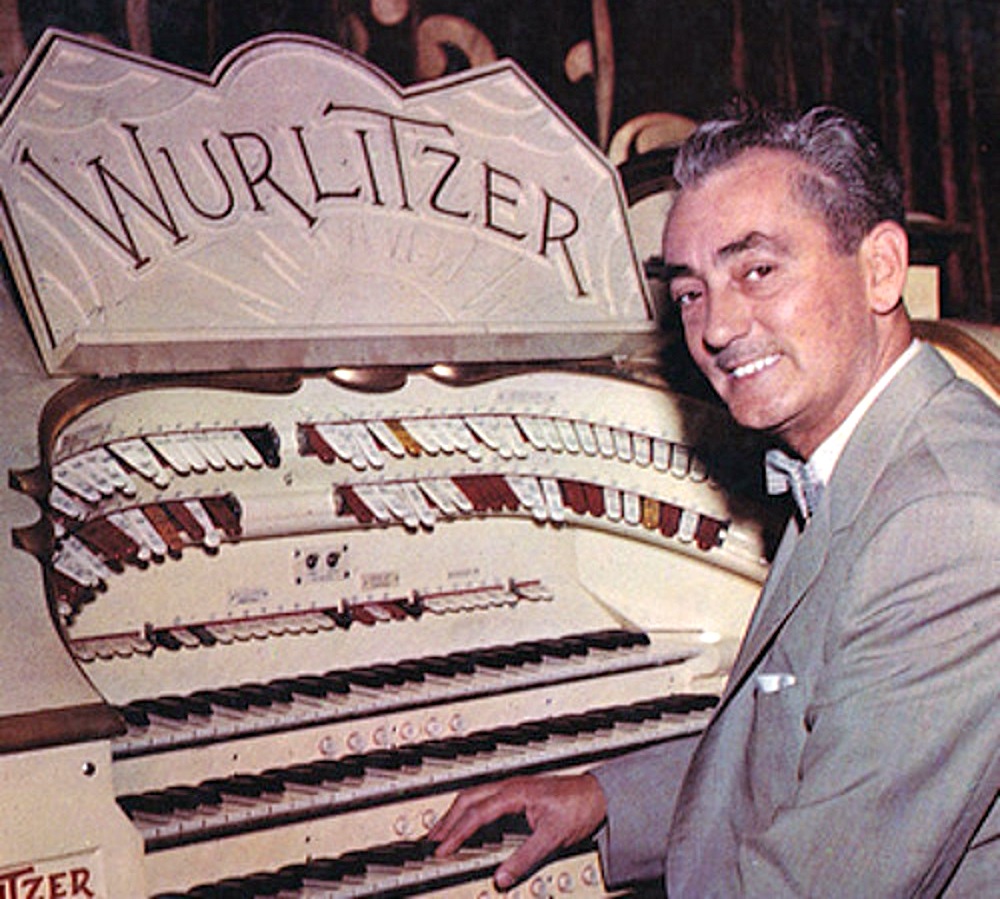Oh, I do like to be beside the seaside. I grew up in a quiet coastal town, where the shore and adjacent pine forests were my childhood playground. Just a few miles up the coast was Southport: the pioneering resort which kicked off a coastal vacation boom in Victorian Britain. Its smell is fish and chips, hot cotton candy and the briny ocean air—its sound is seagulls, children’s laughter, and the fairground organ, blasting out multi-instrumental music hall medleys at the end of the pier.
To me, that marvelous musical automaton will always be closely intertwined with the seaside experience. Perhaps they aren’t heard as often now as they were in the nineties—and far less so then than a generation or two earlier—but many Brits will still be familiar with this sound and its close association with ice cream cones, mini golf, and sunburn. So I was utterly delighted, on a weekend break to Wales last year, to experience something even more magical than a fairground organ; something which produces the same nostalgic noise, but without the aid of pre-printed cards: a theater organ, in the world-champion hands of young Scots organist Aaron Hawthorne.
Aaron was on a nationwide tour of theater organs (or cinema organs, as we call them over here), performing improvised scores to accompany showings of Nosferatu, the 1922 silent movie classic starring Max Schreck as the Dracula-inspired Count Orlok. Nothing could have prepared me for the multimedia masterpiece I experienced that evening: not only did Aaron—seated at the console beside the projector screen, from which he took his improvisational cues—create an entirely unique soundtrack using the Wurltizer organ’s three manuals and pedalboard, but he also provided sound effects via the magnificent instrument’s bells, whistles, horns, and percussion.
The music produced certainly wasn’t jazz but was born in the same era, and for the same emergent mass media audience. Ever since their heyday—the timing of which varies by country, as I would soon learn—organists have sought the same popular appeal by adapting contemporary hits to their instrument. Aaron has made it his goal to keep this dying art on life support a little longer. “I want to do everything I can to ensure that these instruments survive and that audiences keep coming forward to experience them,” he told me on a video call from Glasgow. The 25-year-old has played the piano since he was five, the organ since age ten, and in 2019 was crowned Young Theater Organist of the Year by the American Theater Organ Society. He is, in a word, an authority.

Invented during the early twentieth century by English musician Robert Hope-Jones, the electromechanical theater organ was designed to better imitate the sounds of a full orchestra (“unit orchestra” is their other name), in situations where employing one was impractical or prohibitively expensive—specifically, at those newfangled picture palaces. The instruments soon made their way to the United States, where more than seven thousand were installed. Just two decades later, after the advent of the talkies, they became obsolete and the vast majority were destroyed. But a percentage persisted—particularly in Britain, where the BBC and a certain ballroom preserved their mass appeal for five decades more.
Blackpool Tower Ballroom, on England’s Lancashire coast, holds special significance for organ enthusiasts. Its current instrument was installed in 1935, designed by the late Reginald “Mr Blackpool” Dixon MBE, who would become world famous for playing it. Aaron’s love affair with cinema organs began on a trip there, as a wee lad. “My family would go on holiday to Blackpool every year,” he says. “I was really excited about seeing the tower, but my parents wanted to see the ballroom first.” Young Aaron couldn’t imagine anything more dull—but that perception was about to change. “As soon as I stepped through the doors, that was it,” he tells me, wistfully. “The grandeur of that room is incredible. It’s a breathtaking experience. And when you’re ten it looks even bigger.”
As Aaron walked in, an awesome spectacle began. “The console of the Wurlitzer organ came up through the stage floor as the organist started playing ‘Oh I Do Like to Be Beside the Seaside,’” he remembers. “I spent most of that day in the ballroom, and then dragged my parents along the next day too.” Pianist Aaron just couldn’t believe the incredible skill of the man at the keyboard. (Having seen Aaron at work, I know that feeling.) “The sound which came out was just amazing,” he recalls. By his teenage years, Aaron was obsessed. “I was researching the Blackpool organ online, along with all the organists who played it,” he tells me, confiding that for a few years he thought the world’s only cinema organ was in Blackpool Tower. “Eventually I realized there were more theater organs dotted around—including an instrument in Pollokshaws, on the south side of Glasgow, near where we lived,” he says.
Aaron’s parents took him to see his local instrument, aged 13, while volunteers were working on it. “It almost had that Blackpool Tower effect on me again,” he tells me. “We walked in and there was a very different-looking instrument. It had a light-up, ornate glass surround and the familiar Wurlitzer logo. It was truly, truly beautiful. I was just hypnotized by it.” It was the first time the would-be organist had a chance to touch the instrument. “Thankfully, over the next few years, they let me go back and play it,” he says. “At the same time I got involved in church organs through school—but no one was really teaching me.”
 Aaron soon became a familiar sight around the Pollokshaws organ. He got helpful hints from organ custodians he met, including the internationally renowned Michael Wooldrige. But, like many a jazz musician, he honed his craft through self-guided listening and experimentation. “How to practice is quite a philosophical question,” he tells me, “because there’s no syllabus, no guidebook. Michael helped me to define my musical approach—to find my voice, so I was comfortable sitting down at any organ—but otherwise it was just a lot of grueling, frustrating hours.” He elaborates: “You’re splitting your brain into four or five parts but, once it clicked, it was like riding a bike—I could mimic the Blackpool sound. Then I got past it and discovered what I could do with these things.”
Aaron soon became a familiar sight around the Pollokshaws organ. He got helpful hints from organ custodians he met, including the internationally renowned Michael Wooldrige. But, like many a jazz musician, he honed his craft through self-guided listening and experimentation. “How to practice is quite a philosophical question,” he tells me, “because there’s no syllabus, no guidebook. Michael helped me to define my musical approach—to find my voice, so I was comfortable sitting down at any organ—but otherwise it was just a lot of grueling, frustrating hours.” He elaborates: “You’re splitting your brain into four or five parts but, once it clicked, it was like riding a bike—I could mimic the Blackpool sound. Then I got past it and discovered what I could do with these things.”
In time his dabblings gave way to serious study: he completed a master’s degree in music at the University of Glasgow (in spite of choosing an instrument which is “not recognized academically”), became Glasgow Cathedral’s inaugural organ scholar and began competing internationally. Nowadays he has his own keys to the building, and can practice his craft whenever he likes. (“It always tickles me when people ask me how I get it all on the van,” he laughs.) He has also forged a freelance career as a touring concert musician and, in the last few years, has revived the lost art of accompanying silent movies on the instrument. His sophomore tour will see him soundtrack The Hunchback of Notre Dame—the 1923 classic which remains the biggest hit of the silent movie era, taking $3.5 million at the box office.
He is continuing an intergenerational organ tradition, handed down—particularly in Britain—through the medium of radio. “In the US, theater organs were used almost entirely for silent film accompaniment,” explains Aaron. “When the talkies came in, the cinemas couldn’t get rid of the organs fast enough. But the UK’s busiest year for organ import was 1937, ten years after [pioneering talkie] The Jazz Singer, because we found a niche for them in film intermissions and on radio broadcasts.” Perhaps hankering for that seaside nostalgia, millions of Brits would tune their wireless each night to the BBC Light Programme and its successor, BBC Radio 2, to hear popular tunes played by the likes of Douglas Reeve, Gerald Shaw, Arnold Loxam, or William Davies—right up until the 1970s. (The BBC even had its very own theater organ, which was broadcast regularly from 1930 until 1960.)
Reginald Dixon was the most important of these maestros. Resident organist at the Blackpool Tower Ballroom from 1930 to 1970, he recorded 296 records and outsold Frank Sinatra at the height of his fame. (“That’s like me selling more albums than Adele,” said Aaron.) “Blackpool was the holiday resort to go to, especially for people in Scotland and the South of England,” Aaron explains. “And Dixon was a celebrity—everyone loved him and his very nostalgic sound of holidays in Blackpool. It was like a little musical postcard every time they heard one of his records.” He adds: “If it hadn’t been for Dixon and Blackpool, there would be even fewer cinema organs than the few dozen left today. He had such a huge following that there were still enough people who remember him and want to save these nostalgic, happy things.”

It is saving these instruments and spreading this joy, rather than winning plaudits and accolades, which Aaron sees as his lifelong mission. I ask him why he tours, rather than recording his music. “People have a misconception that you can experience anything on a virtual level,” he explains, “but you will never be able to replicate the feeling of being in a room with live music—especially these organs, because they are part of the building and will make it rumble and shake beneath you.” His busy live program includes sit-down concerts, dances and film screenings, the last of which are his favorite gigs. “It’s all improvised, and I just go in completely blind,” he explains. “The second time I watched Nosferatu in its entirety was my first live performance. Anything could go wrong and that’s the thrill: will this music complement the film, or mess it up? I just have a blank canvas and all these sounds to play with. There are times you get it right and you feel the film seeping from the screen, through your body and into your fingers. That’s what inspires me.”
Aaron describes his more traditional organ recitals—which feature his take on music hall tunes, film scores and pop music right up to the 1980s—more like “painting by numbers.” (“There isn’t much you can do with more modern pop on an organ: it lacks strong melody or harmony.”) But the thrill of seeing and hearing people enjoy the music keeps him at the keys, whatever the context. “I’ll do anything which keeps these instruments being played, keeps new organists coming forward and playing and maintaining these instruments,” he says. “I would love to reach Reg Dixon levels of fame, so Ed Sheehan watch out—but it’s more about making sure the instruments survive, than the success of my career with them.”
The fact that he can even make a living doing what he loves is a big win, in Aaron’s book. “ I grew up in a low-income household: council house, free school meals,” he says. “So the very fact that I can tour internationally is just unbelievable. I always wanted to see the world, but I thought it might be when I retire, because people like me don’t usually get to do that.” He adds: “If I didn’t play these instruments, my life would be completely different and I wouldn’t have done a quarter of the things I’ve done. And it’s so funny because it’s such a tiny niche in our history—almost microscopic—and yet it’s made the world so much smaller to me. And I’m so grateful for that.”
To see what Aaron is up to, and when he might be coming to an organ near you, see his website at www.hawthorgan.com.
Dave Doyle is a swing dancer, dance teacher, and journalist based in Gloucestershire, England. Write him at davedoylecomms@gmail.com. Find him on Twitter @DaveDoyleComms.






















